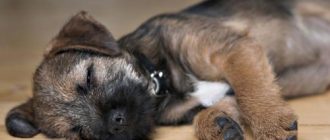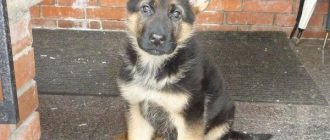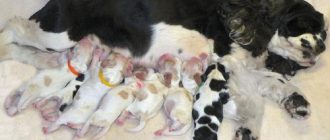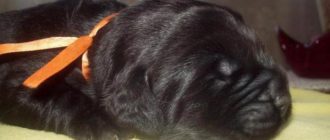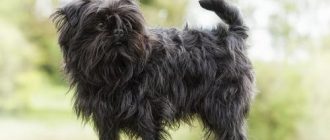Akita Inu is one of the most famous breeds in the world. She became known primarily due to the legendary Japanese dog Hachiko. Wonderful Akita Inu Spread breed characteristics: nobility, friendliness, devotion, good nature. These cute statuette dogs with expressive eyes simply can not leave a person indifferent.
Color classifications
Contents
In the cynological community, there is no consensus on acceptable colors Akita Inu. World Cynological Organization permits only four:
- brindle;
- snow-white;
- red-fawn;
- sesame.
Other organizations have their own versions. AKIKHO admits the following suits of Japanese Akita:
- white
- redhead;
- spotty;
- black
- brindle;
- sesame seeds.
According to NIPPO, only 5 variations are distinguished:
- white
- black
- sesame seeds;
- redheads;
- tiger.
AKIKIO allows such suits of “Japanese huskies”:
- the black;
- sesame;
- white;
- ginger;
- brindle.
Another common classification of breed colors:
- “Red Urazhiro.” “Fox” red with characteristic white marks on the cheeks, lower jaw, muzzle, neck, chest, abdomen, inner parts of the legs.
- Solid snow-white with a black nose.
- Brindle. It is divided into three varieties: shimofuri (silver “tiger”), actor (red, red tiger), kurotor (black Tiger”).
In the birthplace of the breed, in Japan, the traditional fox color is valued Akita.
Colors Akita Inu
Each of the suits of “Japanese husky” is interesting for its individual features.
White color
White Akita Inu is still a rarity in Russia. But in Japanese homeland, they are already widespread. This color is the youngest, It was bred only at the beginning of the 20th century.
The main feature of snow-white Akit is the absence of even small ones marks, spots on the body. A yellowish, grayish plaque on the back, the sides are considered a disadvantage. But at the same time, the presence the bluish, silver “mantle” adds the dog points to exhibitions.
These dogs are not albinos. They have dark eyes, black or “liver” nose, black lips, eyeliner in the eyes – this standard requirement. As an exception, a light nose is allowed. But lips, eyes should be black.
Akita white color, according to the observations of the owners, are more prone to allergic reactions – dogs need special nutrition, matched by a veterinarian. One manifestation of an allergy is the appearance of yellow spots on the ears, face, back of the dog.
Photos, videos of snow-white Akita Inu:

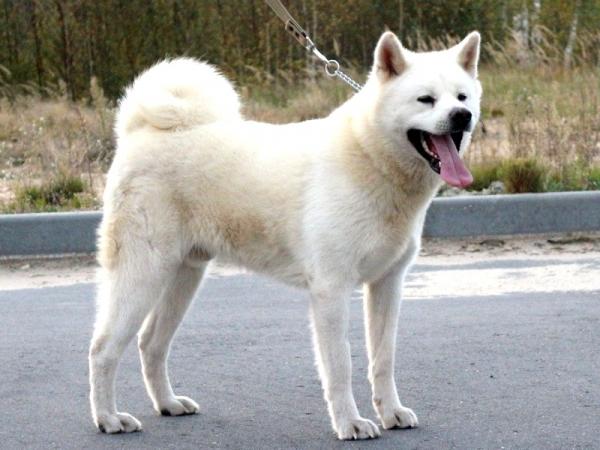
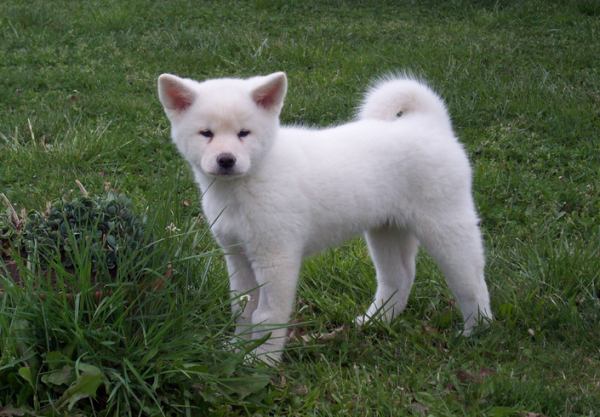
The black
Although this suit is acceptable among the characteristics of the breed, meeting the pitch black Akita Inu is a rarity. At closer examination of a dog of this color – black “sesame” or “tigers” without clearly separated stripes.
The fact that not all standards allow black Akit is associated with Japanese traditional breed representation: dark mantle and invariably snow-white bottom – breast, lower part of the muzzle, cheeks, abdomen and internal parts of four paws, tail.
A slight variation in the colors of “Japanese huskies” may be due to the fact that previously black and white Images. Perhaps there were more types of Akit colors, but the lack of the possibility of a multi-colored drawing has done its job.
Photo of a black Akita Inu:
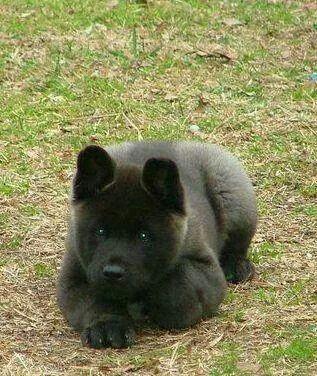
Brindle
A similar color Akita Inu in Russia is a novelty. However in others countries such “exotic” “Japanese likes” are already very common. The following tigers are allowed:
- blue;
- white (with light stripes);
- black (color is divided by the level of saturation of the bands);
- red (red).
One of the color requirements is the absence of stripes on the dog’s head. For each suit, individual characteristics are distinguished. Appreciated pale, unsaturated variations of red, black tigers, suit “pepper and salt” (black and white brindle).
Tiger color – the most unique and inimitable. Impossible to meet two identical “tigers” – such animals are individual. Neither photographs nor videos can convey the compelling animals: the color looks different with artificial, natural light in the morning, afternoon and evening.
In the photo, video – tiger Akita Inu:
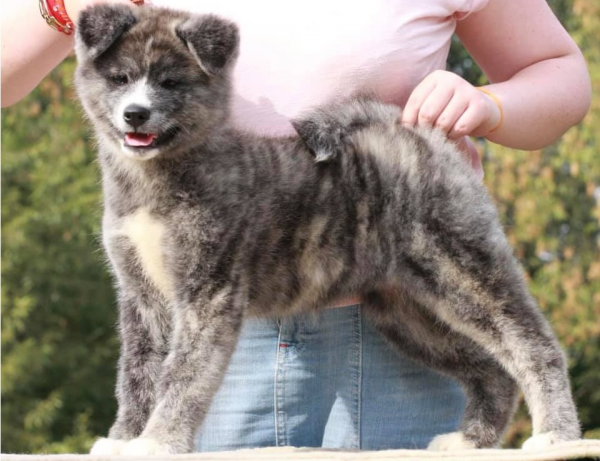
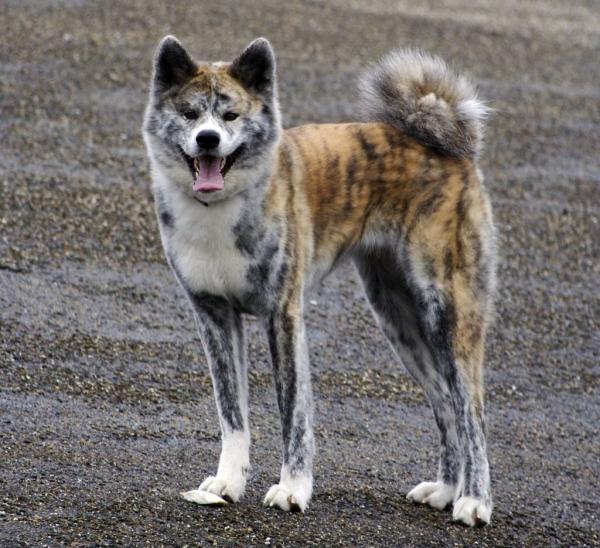
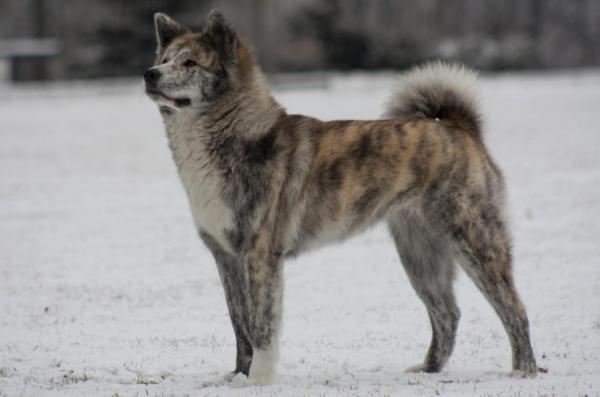


The black
Although this suit is acceptable among the characteristics of the breed, meeting the pitch black Akita Inu is a rarity. At closer examination of a dog of this color – black “sesame” or “tigers” without clearly separated stripes.
The fact that not all standards allow black Akit is associated with Japanese traditional breed representation: dark mantle and invariably snow-white bottom – breast, lower part of the muzzle, cheeks, abdomen and internal parts of four paws, tail.
A slight variation in the colors of “Japanese huskies” may be due to the fact that previously black and white Images. Perhaps there were more types of Akit colors, but the lack of the possibility of a multi-colored drawing has done its job.
Photo of a black Akita Inu:

Brindle
A similar color Akita Inu in Russia is a novelty. However in others countries such “exotic” “Japanese likes” are already very common. The following tigers are allowed:
- blue;
- white (with light stripes);
- black (color is divided by the level of saturation of the bands);
- red (red).
One of the color requirements is the absence of stripes on the dog’s head. For each suit, individual characteristics are distinguished. Appreciated pale, unsaturated variations of red, black tigers, suit “pepper and salt” (black and white brindle).
Tiger color – the most unique and inimitable. Impossible to meet two identical “tigers” – such animals are individual. Neither photographs nor videos can convey the compelling animals: the color looks different with artificial, natural light in the morning, afternoon and evening.
In the photo, video – tiger Akita Inu:





Redhead
Red, red – the traditional, most common color Akita Inu. Allowed the color of the “mantle” from pale beige almost to fiery red. At the same time, a white shirt-front, cheeks, bottom are required muzzle, stomach, inner parts of the legs. There may be light marks on the neck.
Dark “masks” on the face of “Japanese huskies” are unacceptable. But for American Akit such a feature is not a disadvantage breed.
It was the red-fawn color that was the legendary Hachiko. Similar Akita – one of the most spectacular, especially the fire red dog suits. Color forms with age – newborn puppies almost gray, black. From about 3 months, the suit begins change to constant.
Photo of red Japanese Akit:


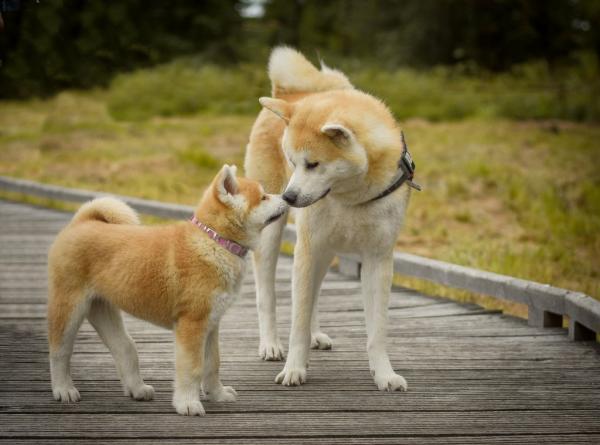
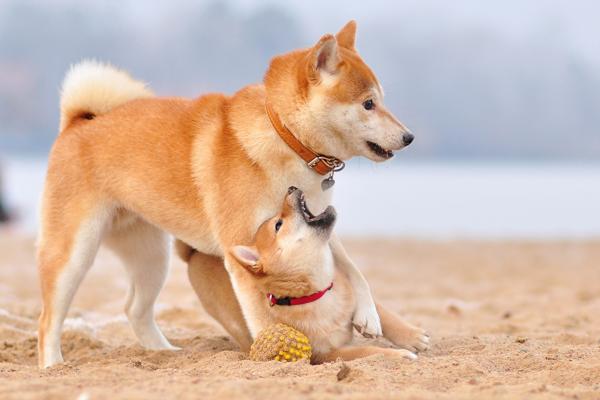
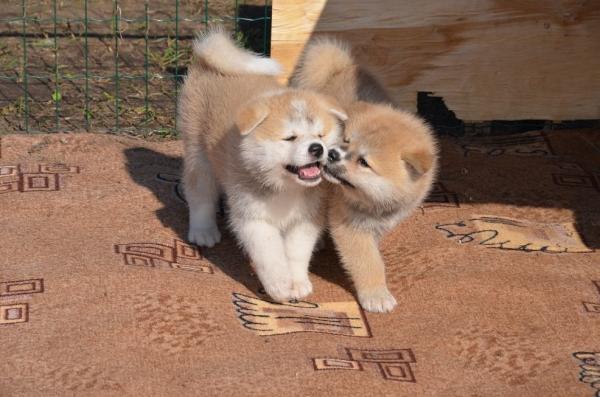
Sesame
This color is becoming a rarity now, at least in The 50s 20th century was the most common among representatives Akita Inu. This is a red “mantle”, but with a kind of black “belt” on the back, snow-white bottom. As for the red representatives, here the white bottom is important – the chest, stomach, inner parts of the legs, tail, cheeks and lower jaw.
Today sesame color practically does not participate in selection. On he is no longer popular in the breed’s Japanese homeland; there are such dogs in Russia Hardly ever. Due to the similarity of colors of these representatives of the breed often called “Japanese shepherd dogs.”
In the pictures – sesame Akita Inu:

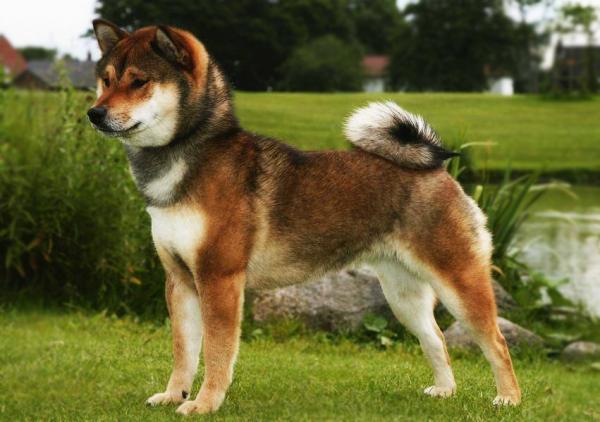
Breed history
Akita Inu is considered one of the 14 most ancient canine breeds. This is confirmed by DNA studies found cave paintings. Unofficially they are called Japanese likes, although Akita are considered Spitz-shaped dogs.
Until about the 17th century, the pretty ancestors of Hachiko were workers. dogs: they guarded human dwellings, helped in hunting, grazed cattle and even took part in dog fights. Since Akita are dogs medium build, they began to cross with mastiffs. These dogs became spectacular fighters in performances. Newly formed the breed is called “matagi”.
Since the 18th century, Akita Inu have become privileged favorites – common people were forbidden to keep such an animal. Masters only handsome people became handsome. They set Akit apart for their mind, quick wits, which made the dogs excellent hunters. Dogs successfully succumbed to complex training. The status of the breed was elevated. even to the imperial level.
During World War II, smart Akita Inu for help soldiers were “called” to the front. This almost led to extinction of the breed. With difficulty in the post-war years, dog handlers were able restore its strength.
Cute puppies liked the American soldiers who fought on territory of Japan. They took the dogs to their homeland. By way crossing of “immigrants” with local breeds a new breed – American Akita. Its representatives are slightly larger “Japanese” are distinguished by more diverse stripes.

